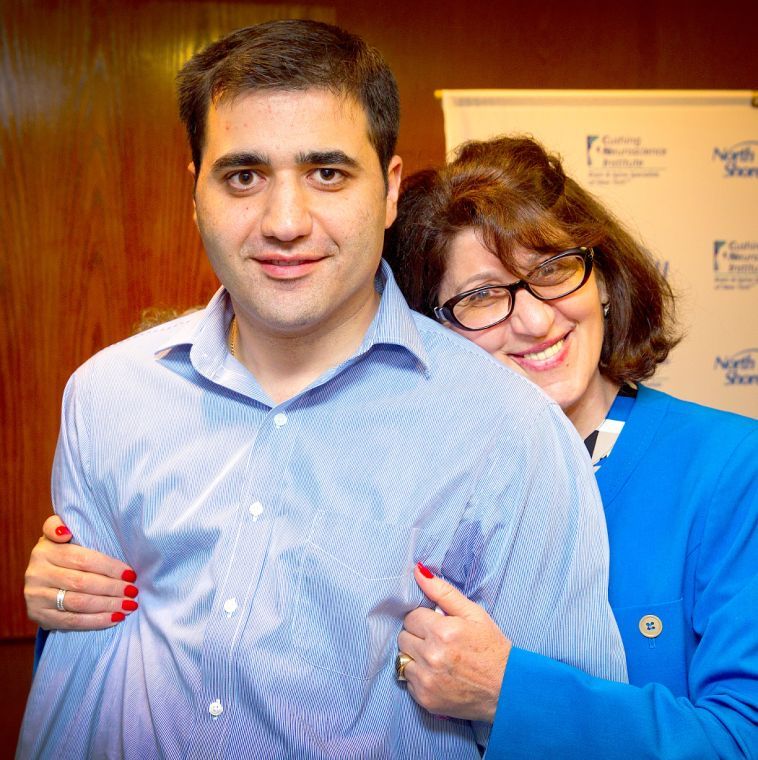After 23 years of medical care and numerous surgical procedures, Gagik Hovanessian finally got a clean bill of health from the North Shore-LIJ Health System on Thursday and the 30-year-old Armenian man wanted to express his appreciation.
“I just want to say thank you to all the doctors who have helped me here at the North Shore-LIJ Health System,” Hovanessian said at a news conference. “You’ve been following me for so long, I feel like you are my second family. For the first time in my life, I am healthy. No more headaches, no seizures. To me, this is like a miracle.”
Hovanessian, a native of Yerevan, Armenia was joined by his mother in praising the staff at North Shore-LIJ.
“I am very emotional today,” said Hovanessian’s mother, Jasmin. “Gagik is my son. Thirty years ago, I gave birth to him. But the doctors here have given him life.”
In 1990, a then 7-year-old Hovanessian was brought to Schneider Children’s Hospital in New Hyde Park – now known as Cohen Children’s Medical Center – for the treatment of Tetralogy of Fallot, a rare congenital heart condition that occurs in five out of every 10,000 babies.
Though he was successfully operated on at the time by Dr. Vincent Parnell, now the surgeon-in-chief at Cohen Children’s Medical Center, Hovanessian developed scar tissue after an infection set in, which led to a severe seizure disorder.
“Gagik’s seizures were the result of an infection following his congenital heart defect,” said Dr. Ashesh Mehta, North Shore-LIJ Health System’s director of epilepsy surgery.
With the help of the Russian Gift of Life and the International Rotary, Hovanessian returned to Schneider Children’s Hospital at age 16 for treatment of his seizures. Doctors would later determine he would need brain surgery to correct the condition.
On May 8 of this year, Hovanessian returned to the United States and was admitted to North Shore University Hospital in Manhasset, and on May 29 he underwent an eight-hour diagnostic epilepsy surgery to implant electrodes to pinpoint where the seizures began and what areas were affected.
Five days later, Hovanessian went in for a second surgery, this time a six-hour procedure in which the seizure-producing part of his brain was removed.
Doctors were concerned that the surgery could harm the areas of Hovanessian’s brain that controlled movement, vision, memory, language and feeling.
To their relief, Hovanessian came out of the surgeries seizure-free, with no impairment to his speech, language or memory skills, and for the first time in his life, fully healthy.
“The surgeries that we did to end his seizures were very delicate,” said Mehta, who performed both surgeries. “Great care was taken not to harm any of the brain areas responsible for speech, language and movement. Gagik is a great success story. He is ready to go home and live his life to the fullest.”



